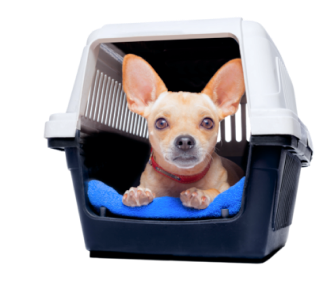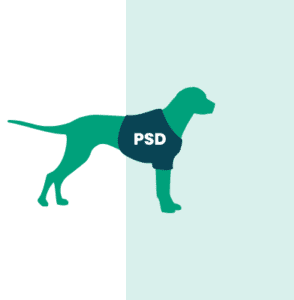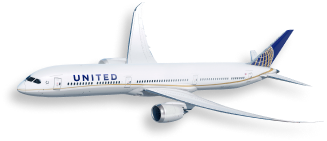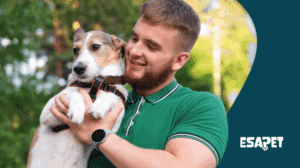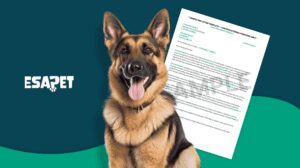United Airlines Pet Policy: All About Traveling with Pets in 2026
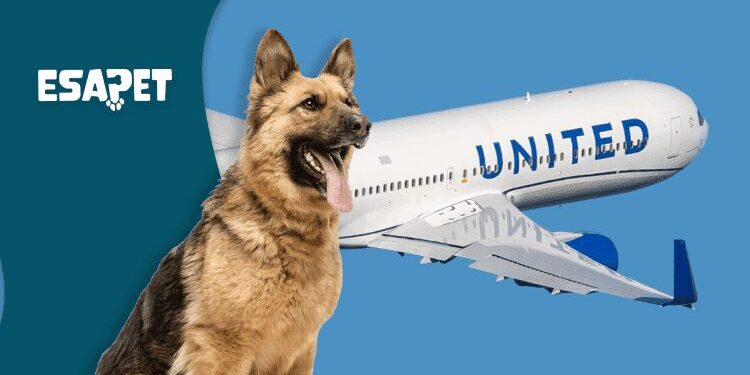
Every airline that allows pets has its own ‘pet policy‘ outlining requirements and restrictions. United Airlines provides clear guidelines about traveling with pets and assistance animals. These also include ESAs, service animals, and PSDs.
If you plan to travel with your pet on United Airlines, knowing their pet policy can make the journey smooth. United Airlines allows only a limited number of pets per flight. Making a reservation in advance can help you secure a spot for your pet.
The airline also charges a pet fee and has pet age, type, and carrier restrictions. This article will cover all the key aspects of United Airlines’ pet policy. We’ll also discuss the airline’s policy regarding service animals and PSD and how you can guarantee service animal rights with a PSD Letter.
United Airlines Pet In-Cabin Options and Carrier Requirements
United Airlines has certain policies for in-cabin travel with pets. These include guidelines on which animals are eligible for in-cabin travel, pet age and size restrictions. United Airlines also has requirements for pet carrier dimensions.
These policies apply to standard pets and emotional support animals (ESAs). Service animals and PSDs are exempt as per their air travel rights by the ACAA.
In-Cabin Carrier Specifications
United Airlines requires your pet to be in a pet carrier when flying with you in-cabin. The airline provides guidelines for certain carrier types, sizes, and dimensions. Here’s what you need to know about carrier requirements:
- Your pet must travel either in a hard-sided or soft-sided carrier.
- The carrier must fit underneath the seat in front of you.
- For hard-sided carriers, the maximum allowed dimensions (in inches) are H: 9, L: 17.5, and W: 12.
- For soft-sided carriers, the required dimensions (in inches) are H: 11, L: 18, and W: 11.
- Although not required by the airline, ensuring the carrier is ventilated is best for your pet’s comfort.
These policies do not apply to service animals. They can travel in the cabin without a pet carrier.
Age, Breed, and Size Restrictions
United Airlines has certain restrictions regarding the allowed animal species and age. The airline may also restrict certain breeds and sizes of animals if there is a health or safety risk. Here’s all you need to know about these restrictions:
- United Airlines only allows cats and dogs to travel as pets in the cabin.
- The pets (puppies or kittens) must be at least two months old for domestic flights.
- Cats and kittens must be at least four months old for international flights. This is to comply with vaccination requirements.
- The minimum age requirement for international flights for dogs is six months. This is to comply with CDC requirements.
- United Airlines doesn’t have any weight or breed restrictions for pets. However, some breeds are advised against air travel, specifically brachycephalic (short-nosed) animals. These breeds are at a high risk of respiratory issues during air travel.
- Pets cannot travel with unaccompanied minors.
Psychiatric Service Dogs (PSDs) on United Airlines Flights
Psychiatric Service Dogs (PSDs) are specially trained to perform tasks to help an individual with mental health issues. Due to this specialized training, the ACAA and airlines recognize PSDs as service animals. PSDs have specific air travel rights.
Airlines’ standard pet policies do not apply to PSDs. United Airlines grants air travel rights to PSDs as per the ACAA. It doesn’t charge any extra fee for PSDs. There are no carrier requirements for PSDs. They can travel in the cabin without any carrier.
You can put your PSD in a carrier if you want, but it should meet the size requirements. However, the PSD should be over four months old to travel on United Airlines.
Required Documentation for PSDs
To travel with Psychiatric Service Dogs on United Airlines, you need to provide certain documentation. These documents help the airline confirm the training, behavior, and health of the PSD. Here are the key documents required:
- U.S. Department of Transportation (DOT) Service Animal Air Transportation Form
This form is required for all PSDs and service animals. It certifies the animal’s training, behavior, and health. The form requires information like the service animal’s name and description, weight, and color.
It asks you to confirm that your PSD is vaccinated and doesn’t have fleas, ticks, or a disease that can harm others. You need to attest that your PSD is well-behaved and trained to perform a task to assist with a disability. - U.S DOT Service Animal Relief Attestation Form
This form is only required for flights over eight hours. It attests that the animal can relieve itself in a sanitary manner (if needed) on longer flights.
You must submit these forms to United Airlines at least 48 hours before travel. You must also have a printed copy of these forms at the airport and on the plane.
Obtaining a PSD Letter for Airline Travel
A PSD letter is a document that confirms an individual’s need for a PSD to assist with a disability. It states that a person has a disability and needs a PSD. It describes tasks the dog can perform to assist with a disability.
A licensed mental health professional issues a legitimate PSD letter. PSD owners are not legally required to have a PSD letter to exercise air travel rights. However, having a PSD letter can be helpful in certain situations.
It can help ease potential inquiries and prevent conflicts and misunderstandings. Here are the key steps to obtaining a PSD letter:
- Quick Online Assessment
Reliable online services like ESA Pet first conduct an online assessment. It covers crucial details about your mental health and your dog’s training and behavior. The information you provide in this step helps the LMHP better understand your disability. - Consultation with a Licensed Mental Health Professional (LMHP)
The service will connect you with an LMHP based on your initial assessment. The LMHP will conduct a more detailed assessment of your mental health to confirm whether you need a PSD. - Getting Your PSD Letter
If the LMHP determines that you need a PSD to assist with a disability, they will issue a PSD letter. The letter will confirm your need for a PSD. Good services like ESA Pet send you a digital PSD letter within three business days of the approval.
Get your Official PSD Letter Consultation from a licensed therapist.
Get PSD Letter Now
Emotional Support Animal Guidelines and Options
An emotional support animal (ESA) provides emotional support and comfort with its presence. ESAs used to have air travel rights under the ACAA. However, with DOT rules and ACAA changes, most other airlines now treat them as pets.
United Airlines’ standard pet policies apply to ESAs. This means ESAs must travel in a carrier that meets the defined size dimensions. The carrier must fit under the seat in front of the ESA owner. United Airlines also charges an extra pet fee for ESAs.
Transitioning an ESA to PSD Status
If your ESA is a dog and you want it to have legal air travel rights, you can consider transitioning it to a PSD. To do so, your ESA must undergo appropriate training to perform tasks related to your disability.
Once your dog is appropriately trained, it will be considered a PSD. This will give your dog legal air travel rights under the ACAA. Your dog will be eligible for free travel and can travel without a carrier. PSDs have public access rights and can go with their owners in public places.
Fees and Charges for Pet Travel on United Airlines
United Airlines charges a pet fee for bringing your pet to the cabin. The standard in-cabin fee used to be $125 each way. The airline has now increased the pet fee to $150 each way.
For layovers exceeding four hours (domestic) and 24 hours (international), there is an extra fee of $125 per stop.
Layover and Extended Travel Fees
United Airlines charges an extra fee for layovers that exceed certain hours. Here’s what their pet fee structure looks like for extended layovers:
- Domestic Flights
The airline charges an extra $125 per stop for domestic flights and $125 per stop for layovers exceeding four hours. - International Flights
You must pay an extra $125 pet fee for an international flight. This applies to layovers exceeding 24 hours. - Future Fee Changes
United’s official website says the standard pet fee has increased from $125 to $150. No other information is available on further increases in pet travel fees.
However, the airline may change its pet fee structure over time. Always check United’s official website for the most recent fee information.
PSD Fee Exemptions
PSDs are considered service animals under the ACAA and ADA. These laws provide them with air travel and public access rights. Therefore, PSDs are exempt from pet fees for air travel. They can travel with their owners in the cabin for free. Airlines cannot charge extra fees for PSDs.
United’s Standards for Service Animals and ESAs
United Airlines has certain standards for service animals and emotional support animals (ESAs). These standards help ensure a safe and comfortable experience for all passengers.
The airline focuses on the behavior, health, and training of the ESAs and service animals. It requires these animals to be well-behaved in the public. The airline ensures that these animals don’t have health issues that can harm other travelers.
For Service Animals, United Airlines requires a DOT form. ESAs require an ESA letter and health certifications. These documents help the airlines verify that the animals meet their criteria.
Behavior and Health Standards for Service Animals
United enforces strict behavioral expectations and health standards for service animals and ESAs. This is to ensure the safety and comfort of all passengers. Here’s what you need to know:
Behavioral Expectations
Service animals and ESAs must be trained to behave appropriately in public. They should remain calm, responsive, and obedient to their handler’s commands.The animals should not cause any disturbances. They must not bark, growl, or exhibit other disruptive behaviors in the airport or on the plane.
Health Standards
Service animals and ESAs must have up-to-date vaccinations. The airline requires service animal owners to attest to this via the DOT Service Animal Air Transportation Form. ESA owners may have to provide documentation of these vaccinations. ESAs and service animals should be clean and free of any odors that could disturb passengers. For flights over eight hours, these animals must be able to relieve themselves in a sanitary manner.
Cargo and Special Exceptions for United Flights
United Airlines has suspended its PetSafe cargo program. The airline no longer offers cargo travel for general passengers. Pets must travel in the cabin with their owners, given they are eligible for in-cabin travel.
However, there is an exception for active-duty military or State Department employees. Their pets can fly in the cargo under certain circumstances. This primarily includes traveling between Honolulu and Guam due to reassignment orders.
Pet Travel Restrictions by Destination
United Airlines allows you to take your pet with you on most flights, given your destination allows pets. However, the airline has specific restrictions on pet travel to certain states and countries. Here’s a list of destinations for which United Airlines does not accept pets:
- Australia
- Barbados
- Brazil
- Cuba
- French Polynesia (Tahiti)
- Guam
- Guyana
- Hawaii
- Hong Kong
- Iceland
- Ireland
- Jamaica
- Marshall Islands
- Micronesia
- Morocco
- New Zealand
- Northern Mariana Islands (Saipan)
- Palau
- Philippines
- Saint Kitts and Nevis
- South Africa
- Sweden
- Trinidad and Tobago
- United Arab Emirates (Dubai)
- United Kingdom
Preparing Your Animal for Travel on United Airlines
Preparing your animal for air travel can ensure a smooth and comfortable journey for you and your pet. Make sure your pet is trained to behave well in public settings. It shouldn’t aggressively bark or cause any disruptions.
Scheduling a health check with a vet before travel is crucial. This will help you ensure your pet is healthy enough to travel. Ensure all vaccinations are up-to-date and get any necessary health certificates as required by the airline.
Before travel, let your pet spend time in the carrier. This will help the pet get used to the carrier, making the journey comfortable. Pack items like a portable water dish, absorbent pads, and a small bag of your pet’s usual treats.
Comfort and Health Tips for Your Pet
Traveling can be stressful for pets, especially when they are confined to a carrier. Proper preparation and care can help keep your pet calm and comfortable throughout the journey. Here are some valuable tips to ensure a smooth journey for your pet:
- Offer your pet water before and during travel. Give water in small amounts to avoid overhydration. Use a spill-proof water dish or a bottle specially designed for pets to make hydration easy and mess-free.
- Feed your pet a light meal before the journey. It is best to feed the pet a few hours before the journey. This will help reduce the risk of nausea or motion sickness during the flight.
- Place a favorite toy, blanket, or item in the carrier. Familiar items can help soothe your pet and provide a sense of security.
- Take your pet for a walk or engage in playtime before leaving for the airport.
United Airlines Policies on Pet Carriers and Cabin Placement
United Airlines provides clear guidelines regarding pet carrier size requirements and placement to ensure the safety and comfort of all passengers. According to United’s pet policy, your pet can travel in a hard-sided or soft-sided carrier.
The carrier should meet the defined size requirements and fit under the seat in front of you. It must also be well-ventilated and comfortable for your pet. It’s also important to know that pet carriers count as carry-ons.
Seating and Space Considerations for In-Cabin Pets
When traveling with a pet in the cabin, make sure you adhere to United’s pet seating and space guidelines. Here’s what you need to know about seating for in-cabin pets:
- Your pet must remain in the carrier throughout the travel. It cannot be seated on a lap or in a seat.
- The pet carrier must fit completely under the seat in front of you.
- Pet carriers can be hard-sided or soft-sided.
- The maximum allowed dimensions (in inches) for hard-sided carriers are H: 9, L: 17.5, and W: 12. The required dimensions (in inches) for soft-sided carriers are H: 11, L: 18, and W: 11.
- Passengers with pets may be seated in specific rows.
Important Tips for Travel with Pets on United Airlines
Traveling with pets on United Airlines requires preparation and awareness of the airline’s policies. Whether traveling with a pet, an ESA, or a PSD, making early arrangements is key to a smooth journey.
Make sure the pet carrier meets the defined size requirements. Your pet must remain in the carrier throughout the journey and should fit comfortably in the carrier. PSDs are not required to travel in a carrier.
Give your pet enough exercise before travel, and keep their favorite treats and toys with you. Make sure you offer water to your pet before and during travel. You should visit your pet before traveling to ensure it is healthy and fit.
Final Checklist for Pet Travel
Before heading to the airport, it’s best to check you have everything needed to ensure a comfortable journey for your pet. You can use the following final checklist to ensure everything is in order:
- Confirm you have all the necessary documents. These include an ESA letter, health certificates, vaccination records, and U.S. DOT forms (for service animals).
- Double-check that your pet meets the requirements for your destination, especially for international travel.
- Ensure your pet carrier meets United’s size guidelines.
- Place a soft blanket inside the carrier for your pet’s comfort during the flight.
- Make sure you bring pet travel essentials with you. These include pet-friendly water bowls, familiar toys, and small portions of food or treats.
- Feed your pet a small meal a few hours before departure.
- Arrive at the airport early to allow enough time for check-in and security.
FAQs About United Airlines’ Pet Policy
How Much Does United Charge for Pets?
United used to charge a pet fee of $150 (each way). However, they have increased the pet fees to $150 (each way) since 4/26/24. There is also an extra pet fee of $125 for extended layovers ( more than four hours for domestic flights and 24 hours for international flights).
Is United Strict on Pet Policy?
Yes. United has certain pet policies and provides clear guidelines regarding traveling with pets. Pet owners must comply with these guidelines when traveling on United Airlines.
Can My Dog Sit on My Lap During a Flight?
No. Dogs or any pet cannot sit on the lap during a flight. Pets and ESAs must remain in carriers throughout the flight. PSDs and service animals can travel without a carrier. However, they must be positioned so as not to obstruct the aisle or other passengers’ space.
How Do I Add a Dog to a Flight?
If you have an ESA dog or a larger dog, check whether the airline you travel with allows pets. Almost all USA airlines allow service dogs and PSDs under the ACAA and Americans with Disabilities Act. Bring your required documents, such as an ESA letter and health certificates.
Conclusion: Preparing to Travel with United ESA Pet Policy
United Airlines has certain pet policies and guidelines on flying with a pet of ESA. By following these guidelines, you can ensure a comfortable and hassle-free flight. United requires pets to be in a carrier throughout the flight. Make sure your pet carrier meets size requirements.
Bring pet travel essentials with you, such as familiar toys and treats. Give your pet enough exercise before leaving for the airport to ensure a comfortable journey. Double-check that you have all the required documents, such as vaccinations, health certificates, and an ESA letter.
If you’re looking to get a legitimate ESA or PSD letter, ESA Pet is a reliable option. Its highly-skilled, licensed medical health professionals thoroughly assess your mental health and issue an ESA or PSD letter accordingly.
